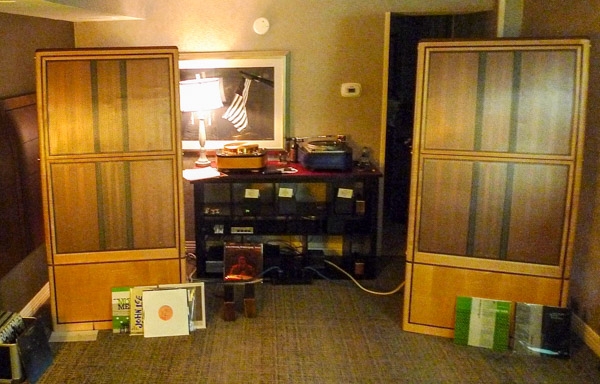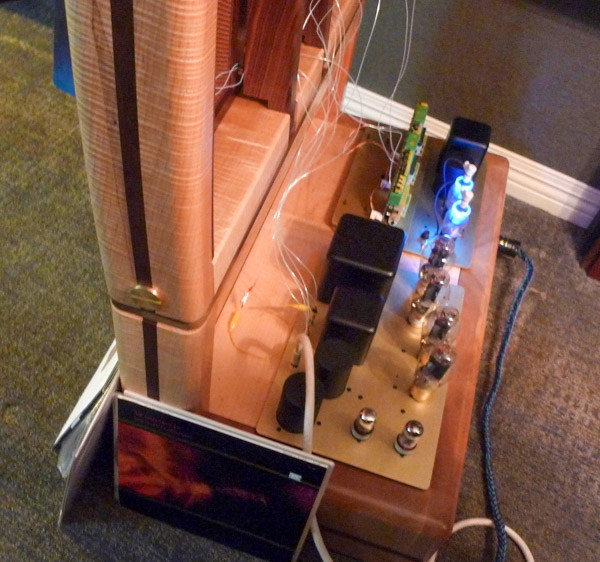| Columns Retired Columns & Blogs |
Damn, it's good to see this in here. Herb, you're an animal!

“This is where we think the original designers, Peter Walker and D.T. Williamson, might have ended up as an ultimate statement product,” Dave told me.
The music-playing source for all this re-invention is a restored, vintage grease-bearing Garrard 301 turntable with two tonearms: one by Thomas Schick, the other by Schroeder. The mono and stereo electromagnetic (field coil) cartridges are built from scratch by Dave Slagle. Everything in these prototype moving coils is new, including the stylus, cantilever, suspension, coils, coil-former, and tieback. Both MCs are connected to nickel-core Slagle-built step-up transformers ($2700 for copper, $4500 for silver wire). The SUTs connect to a L–R (no caps) RIAA “Phono Corrector” ($15k) and a remote controlled silver-wound autoformer-based passive preamp with sixty 1dB steps and a seamless transition to up to +7 dB of gain.
All the records Dave played sounded fantastically fine, satiny-smooth, and vivacious, but none as fine or exciting or as real-life-like as the acetate test pressing of Sonny Rollins’ Way Out West cut on a Lyrec cutting lathe by Pete Hutchison of the Electric Recording Company. This unbelievably exotic audio-playback experience (including the ERC acetate) is artisanal audio at its highest level of ambition. In case you didn’t quite follow, let me recap: Pete Hutchison made the vinyl record from scratch, Wayne Piquet provided some Quad parts, Andy Armstrong made the wood cabinets. . . and Dave Slagle made the rest.


"These reinvented Quads are bi-amped using two push-pull 300B tube amps, which are mounted in the loudspeaker’s bass." Is that a double bass you're referring to?
LOL

... scratch builds the stylus for the phono cartridge.

the diamond stylus on the boron cantilever and casts his own suspension and fabricates his own tie-back lines
h

The Micro-Ridge diamond is mounted to the boron cantilever by Namiki.

Wow, I would LOVE to sit in front of that system.
I love 300b SET (never heard 300b push pull but would love to) and stats.
Whew, those with big checkbooks should have an amazing experience on call with a system like that.
Gotta be killer

... the (sub)woofer units from the Levinson HQD system.

Funny you say that Ortofan as I have been lucky enough to hear 57's way back and my reaction was "nice - no bass"
Bought Koss electrostatic headphones when they first come out, heard Acoustat II with Vivaldi, then huge Beveridge's with Dark Side and was totally sold. Own ML Summit's now and love em.
But as sweet as this system just HAS to be, I agree, throw in a swarm sub system or nice pair of subs and then never leave the listening area.